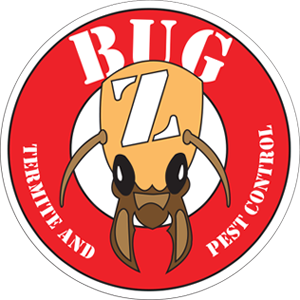Sugar Ants
Sugar ants get their name for their preference for sugary foods.
What do Sugar Ants look like?
Sugar ants vary significantly in size, with worker ants ranging from about 5 to 15 mm in length, which is larger than many other ant species. Their colors also vary widely, including light yellow, dark brown, and black, and some species feature bicolored patterns where the abdomen is a different color than the rest of the body. These ants have robust bodies characterized by large heads and mandibles, particularly in the larger workers, which are sometimes referred to as soldiers. The diversity in size and color among these ants reflects the wide range of habitats they occupy.
Nuisance or danger?
Sugar ants, while they can be a nuisance, especially when they invade homes in search of food, are generally not considered a danger. While the presence of sugar ants in your home can be bothersome, they are not considered a danger to humans or pets. Managing and reducing attractants like exposed food and sugary spills can help minimize encounters with these ants indoors.
How do I know if I have Sugar Ants?
To determine if you have sugar ants in your home or vicinity, you can look for a few indicative signs and characteristics:
1. Appearance: Check for ants that match the description of sugar ants
2. Activity Time: Sugar ants are known for being more active at night. If you notice ants foraging primarily in the evening or at night, it could be a sign of sugar ants.
3. Nesting Sites: Look for their nests outdoors. Sugar ant nests are often found in the ground, with small mounds of earth around the entrance. They might also nest in wood or among rocks.
4. Trails: Like many ant species, sugar ants follow scent trails to food sources. Observing ant trails can help you determine if these ants are entering your home and where they might be nesting.
5. Food Attraction: Sugar ants are attracted to sweet substances. If you find ants congregating around sugary spills, sweet foods, or even sweet plant secretions in or around your home, they might be sugar ants.
If after these observations you believe you have sugar ants, and they become a nuisance, you might consider giving us a call at BugZ Termite and Pest Control.
Why do I have them?
If you find sugar ants in your home, it's usually because they've discovered a source of food, water, or shelter that meets their needs. Here are some common reasons why you might have them:
1. Food Sources: Sugar ants are attracted to sugary foods, which is how they get their name. However, they will also eat proteins and fats, making most kitchens a potential goldmine for them. Spills, crumbs, and unsealed food containers can all attract these ants.
2. Water Sources: Like many pests, sugar ants are in search of water. Leaky pipes, dripping faucets, or even pet water bowls can attract them, especially in dry conditions.
3. Entry Points Sugar ants can enter homes through very small openings and cracks around doors, windows, and foundations, or through gaps around pipes and wires that enter the building.
4. Nesting Sites: While they typically nest outdoors, they may come indoors if they find suitable nesting sites, such as in wall voids or beneath floors, especially if these areas are damp.
5. Environmental Conditions: Sometimes, extreme weather conditions like excessive rain or drought can drive sugar ants indoors in search of more hospitable conditions.
By addressing these attractants and entry points, you can make your home less inviting to sugar ants and reduce the likelihood of an infestation.
What should I do if I have Sugar Ants?
If you're dealing with an infestation of sugar ants taking a comprehensive approach can help manage and eventually eliminate the issue. Here's a practical plan:
1. Identify and Eliminate Food Sources: Ants are attracted to food particles and residues, especially sweets. Ensure that food is stored in sealed containers and that kitchen surfaces, floors, and dining areas are cleaned regularly to remove crumbs and spills.
2. Seal Entry Points: Inspect your home for cracks, holes, or gaps through which ants can enter, especially around doors, windows, and utility lines. Seal these openings with caulk or another appropriate material.
3. Remove Standing Water: Ants need water to survive. Fix leaky faucets, pipes, and any areas of standing water inside and around your home to reduce their water sources.
4. Maintain Yard and Exterior: Keep branches and shrubbery trimmed away from your house to remove pathways for ants to enter. Regularly clear debris and leaf litter from around the foundation of your home.
5. Call BugZ Termite and Pest Control: If the infestation is large, it may be necessary to seek professional pest control services. BugZ Termite and Pest Control can offer more powerful solutions and targeted strategies to deal with the infestation.
Each step can help address the problem, but it's often a combination of these efforts that leads to the best control over sugar ant invasions.
What treatment is effective and how do I prepare for it?
NEVER use an over-the-counter insecticide for ant infestations. These readily available chemicals kill on contact, giving you the false sense that you’ve killed them all! In fact, you’ve now caused the queen to go into “overdrive”, reproducing her missing colony members at a much more rapid pace. Ant treatment involves treating their scent trails and transferring chemicals back to the queen. Once she’s dead, the colony dies soon after. Contact BugZ Termite and Pest Control at the first sign of any ant in the house or elsewhere on the property!
How to Prepare:
1. Identify Activity: Observe where ants are entering your home and where they are feeding. This will help you place baits effectively.
2. Clean Up: Before our professionals start treatment, clean your home thoroughly. Remove food particles and residues, especially sweets, fats, and proteins. This ensures that ants are more attracted to the baits than other food sources.
3. Remove Attractants: Store food in sealed containers and manage garbage and recycling bins effectively to reduce attractants.
4. Seal Entrances: Seal cracks and crevices around doors, windows, and other entry points with silicone caulk to prevent ants from entering.


